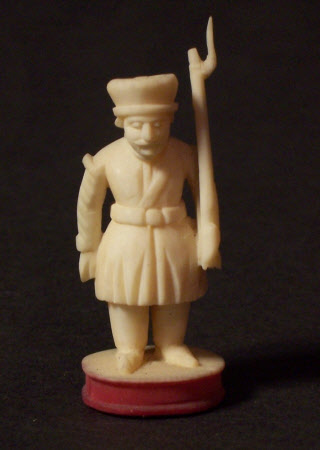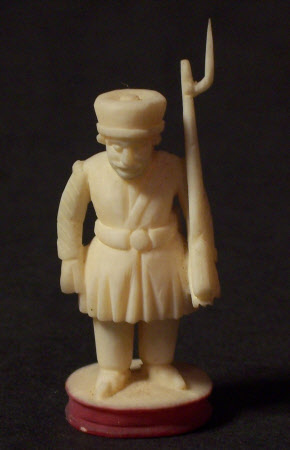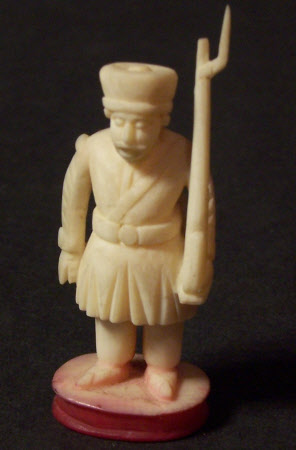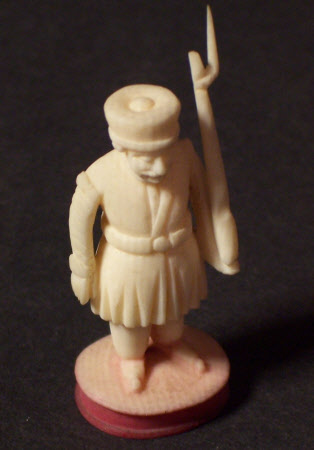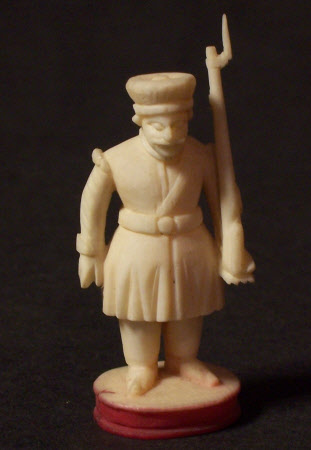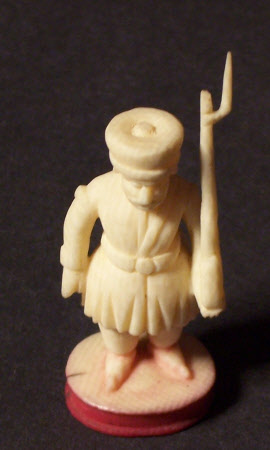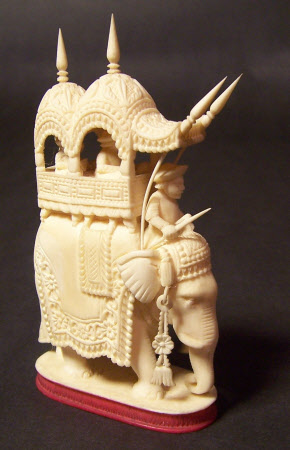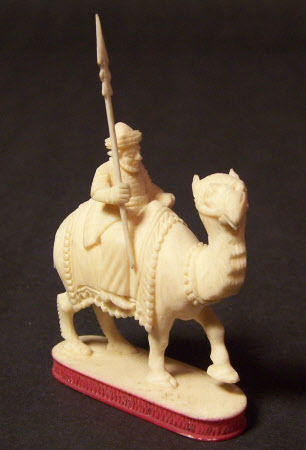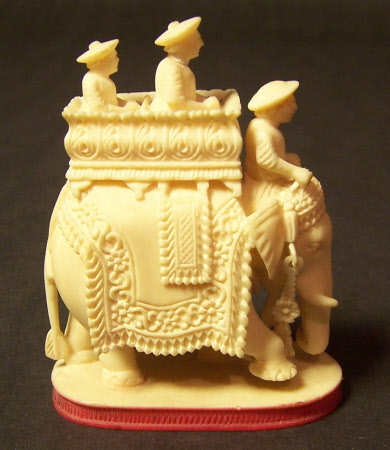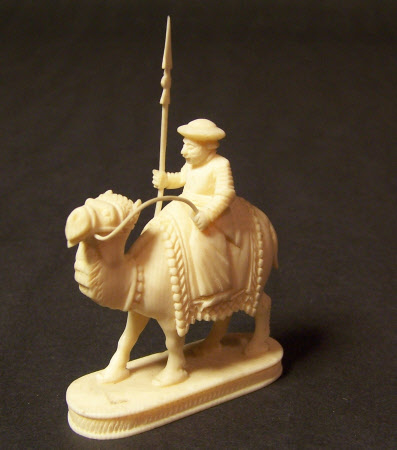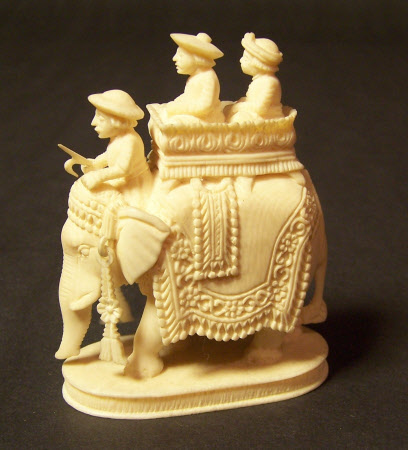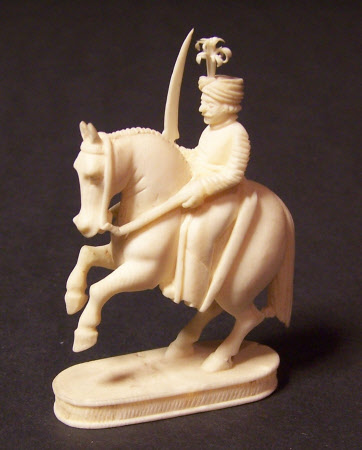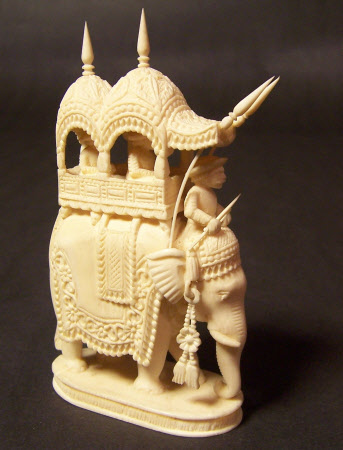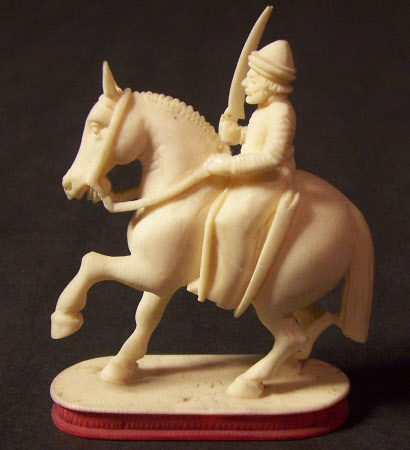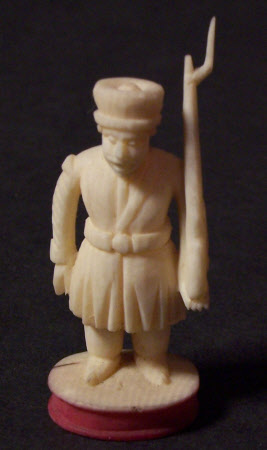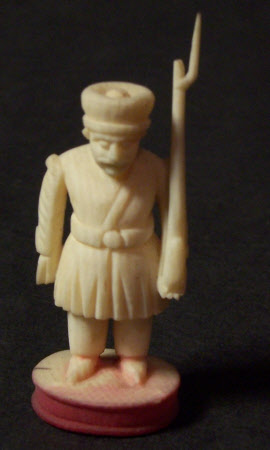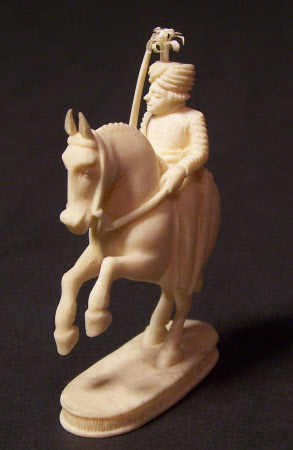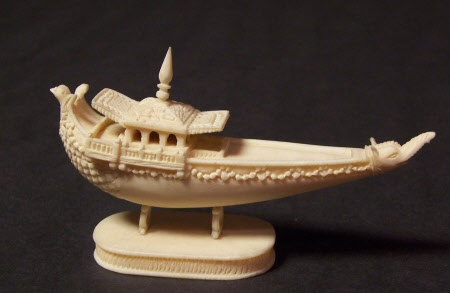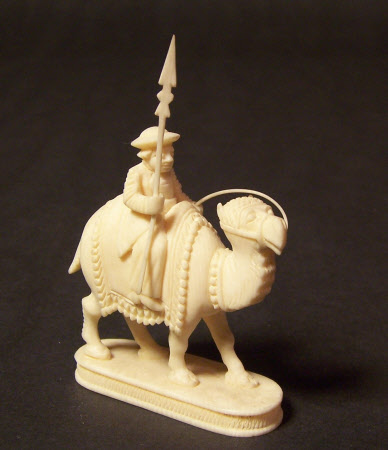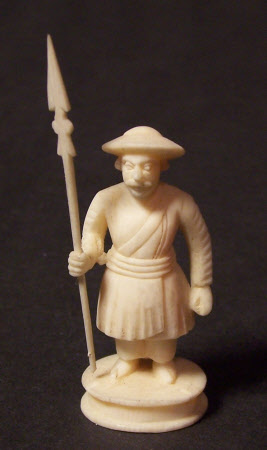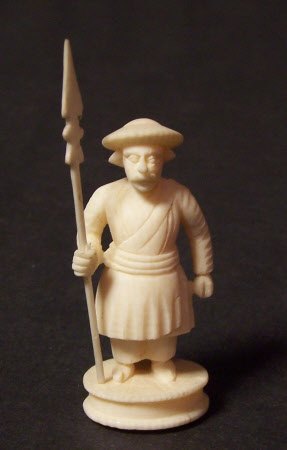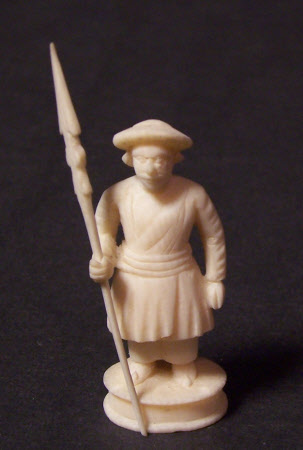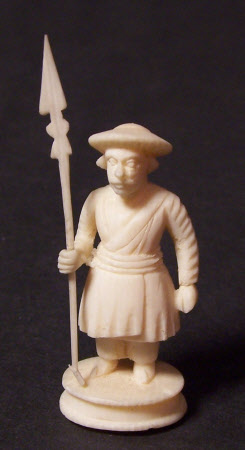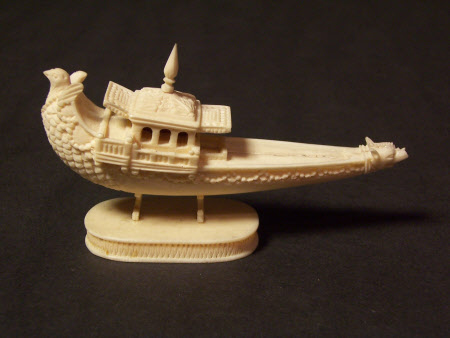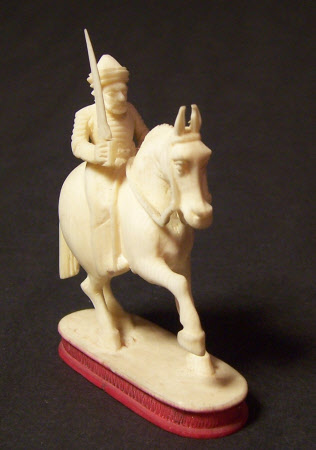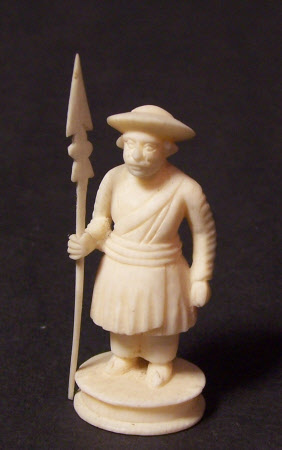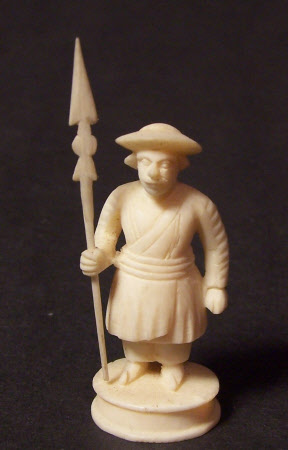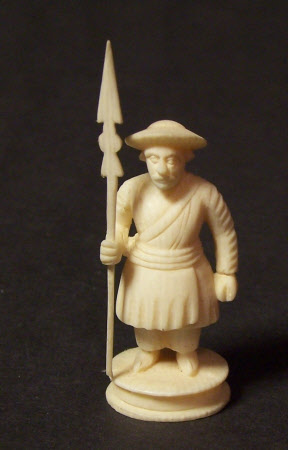A chess set
Category
Ivory and bone
Date
c. 1899 - c. 1905
Materials
Ivory
Place of origin
Murshidabad
Order this imageCollection
Kedleston Hall, Derbyshire
NT 107840
Summary
Ivory, a set of thirty two chess pieces from Murshidabad, Bengal, c. 1899-1905. A set of thirty two chess pieces intricately carved of ivory and distinguished by white and red bases. Each set of sixteen comprised of king and vizier pieces carved in the form of canopied and uncanopied howdah (carriage mounted on the back of an elephant), rook pieces carved in the form of barges, bishop pieces carved in the form of men mounted on camels, knight pieces carved in the form of men mounted on horses, and pawn pieces carved in the form of sentries. Chess is believed to have originated in the 6th century in the Gupta Empire of northwest India and spread through trading networks on the Silk Road. The tradition of ornamental ivory carving has existed in India since the 1st century CE, each region with its own speciality. This chess set was made in Murshidabad, a centre for ivory sculpture in the Indian state of West Bengal. Although international trade of Asian elephant ivory was banned in 1975, illegal trade continues to threaten this endangered species.
